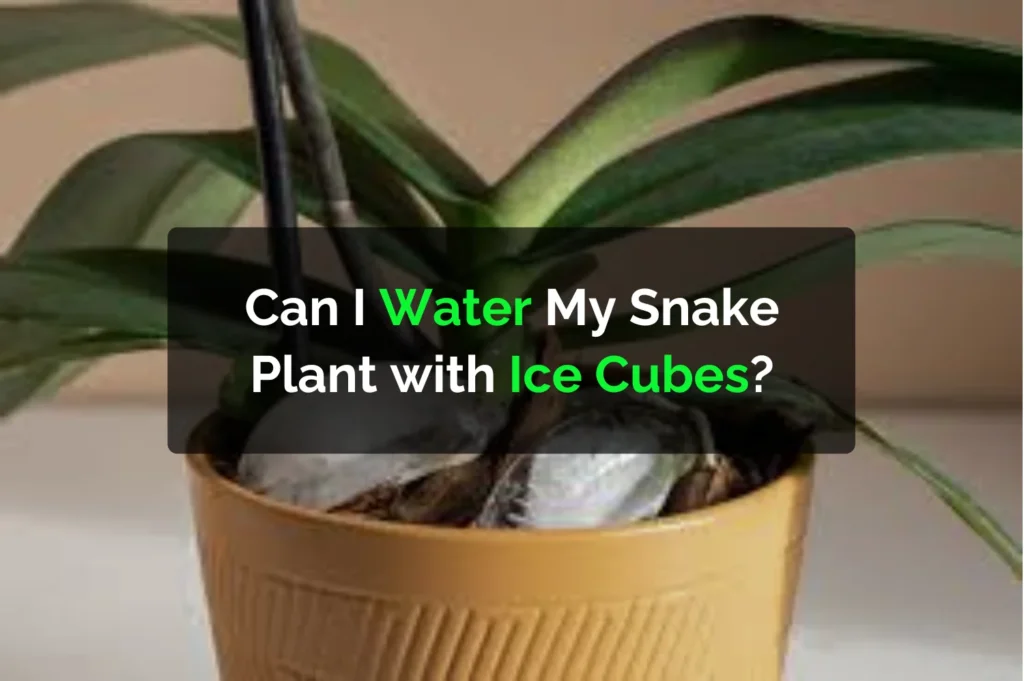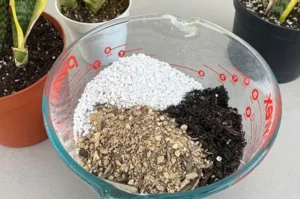If you’re a plant lover or just getting started with houseplants, you’ve probably come across advice about watering with ice cubes. It sounds simple and mess-free. But when it comes to snake plants, also known as Sansevieria or Mother-in-Law’s Tongue, is this a good idea? Let’s find out together.
Should You Water a Snake Plant with Ice Cubes?
No, it’s not recommended to water your snake plant with ice cubes.
Snake plants prefer room temperature water because they naturally grow in warm, dry regions. Cold water from ice cubes can shock the roots, causing stress or even damage to your plant.
Why Ice Cubes Aren’t Good for Snake Plants
1. Sudden Temperature Change
Snake plants are native to warm, tropical parts of Africa and southern Asia. Their roots are sensitive to extreme temperatures. Pouring ice-cold water into the soil lowers the temperature quickly and can harm the roots. This stress may slow down growth or lead to root problems.
2. Inconsistent Watering
Ice cubes melt slowly, which might seem like a smart way to control how much water your plant gets. But snake plants prefer their soil to dry out completely between waterings. Slow-melting ice can keep certain areas of the soil damp while leaving others dry, leading to uneven moisture levels. This makes it harder to maintain a healthy balance.
3. Risk of Root Rot
One of the most common issues with snake plants is overwatering. Even though ice cubes seem harmless, if the soil stays damp for too long, it increases the chance of root rot. Snake plants store water in their thick, upright leaves, so they don’t need frequent watering like other houseplants.
What’s the Best Way to Water a Snake Plant?
Use Room Temperature Water
Always use water that feels neutral to the touch. Avoid water that’s too hot or too cold. This helps keep your plant’s roots healthy and avoids shocking them.
Water Thoroughly but Infrequently
Wait until the soil is completely dry about two inches deep before watering. When it’s time, pour water evenly over the soil until it drains from the bottom of the pot. Make sure to empty any excess water from the saucer to prevent the roots from sitting in moisture.
Use a Well-Draining Potting Mix
Snake plants dislike soggy soil. A cactus or succulent potting mix works well because it drains quickly. You can also improve regular houseplant soil by mixing in sand or perlite.
Signs You’re Watering Your Snake Plant Incorrectly
It’s important to pay attention to the signals your plant gives you. Here are some common signs that your watering routine might need adjustment:
- Yellow, mushy leaves often indicate overwatering or poor drainage.
- Crispy, brown leaf tips usually mean the plant is too dry or the air around it lacks moisture.
- Drooping leaves can result from either underwatering or overwatering. Always check the soil first.
- Moldy or musty-smelling soil is a clear sign that the roots are staying wet for too long.
Can You Ever Use Ice Cubes on Houseplants?
Some houseplants like orchids or certain floral arrangements, might handle ice cubes now and then. However, snake plants aren’t one of them. It’s best to stick with room temperature water and a consistent care routine. Mimicking their natural environment is always the safest option.
Final Thoughts
Watering your snake plant with ice cubes isn’t a good idea. These tough, low-maintenance plants thrive with simple care routines. They do best when their roots stay warm and dry, and when you allow the soil to completely dry out between waterings.
If you want your snake plant to grow strong and healthy, avoid using ice cubes and stick to room temperature water. It’s an easy change that makes a big difference in your plant’s long-term health.






